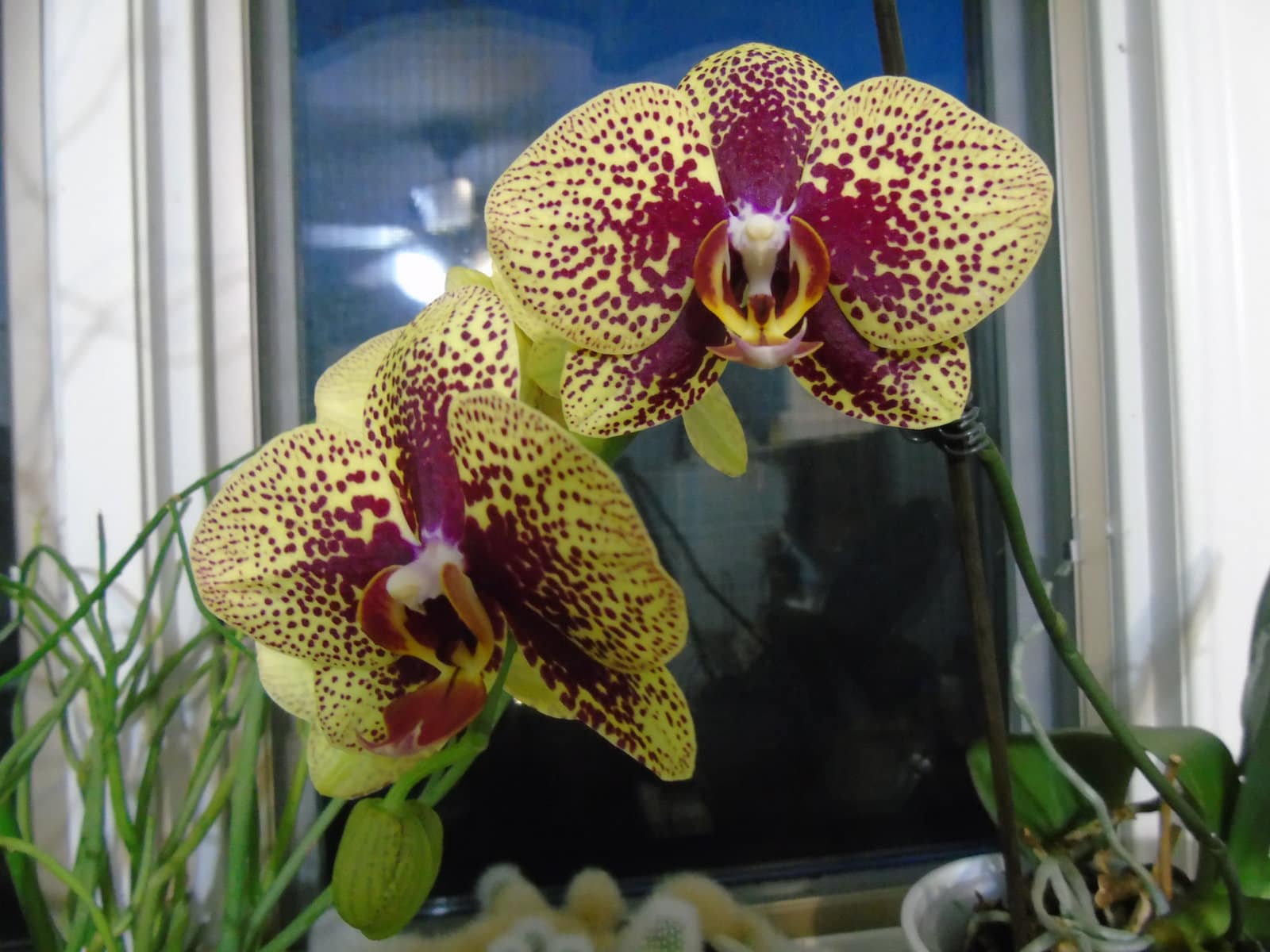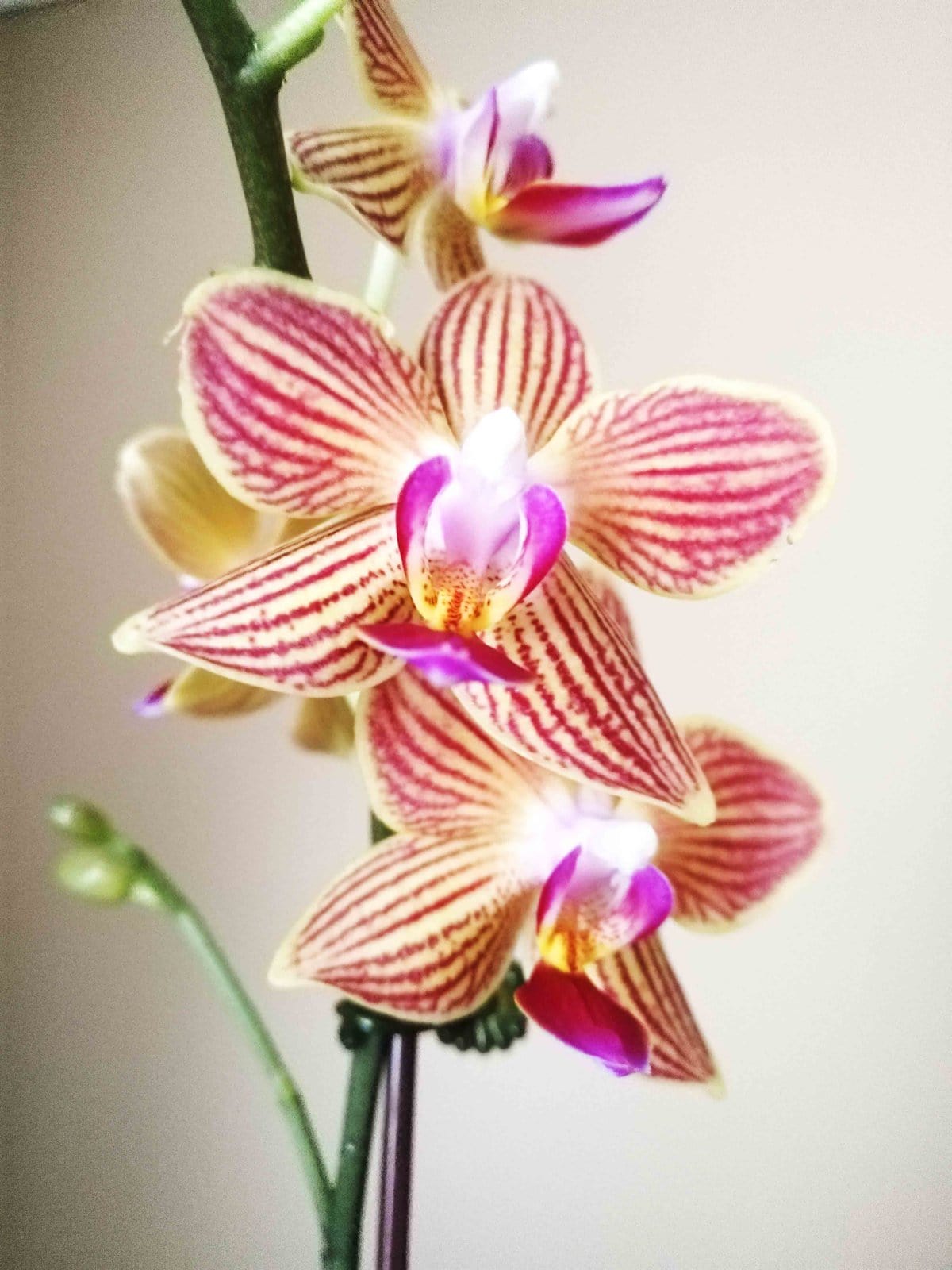Although once considered an expensive plant to be grown by elitists, the orchid has become the top-selling indoor plant.
The orchid family is one of the largest in the realm of flowering plants: More than 25,000 species grow naturally on every continent except Antarctica.
Orchids are either epiphytic (air-growing) or terrestrial (earth-growing); most orchids that you see for sale at florists, grocery stores and big box stores are epiphytic.
In the wild, epiphytes cling to trees and stumps, and draw in moisture through their roots from the mist and rain and decomposing leaves. Knowing this will help you to understand how to better care for your orchid.
Many consider orchids to be a difficult plant to grow, but once it finds a happy spot and falls into a routine, the plant should regularly throw out new roots and leaves or canes, and reward you yearly with a beautiful bloom.
Orchids thrive in strong light, but not hot, direct afternoon sunlight. I find that they do best close to an east-facing window, where they will receive plenty of morning sun, or set back slightly from a south-facing window.
Too much light and the leaves can turn a reddish-brown. With too little sun, the leaves will be dark green, but the plant won’t bloom.
Orchids also need high humidity and airflow around the roots. They need regular periods of drying alternated with heavy watering.
So proper watering techniques are critical because the most common cause of orchids dying is being overwatered.
Usually, when you receive a store-bought orchid, it comes in a thin plastic pot that has drainage holes, but then they are set inside a more decorative pot with no drainage.
They also are often potted in soaked sphagnum moss. I am not sure why some shop do this because it violates two of the main rules for orchids.
There is no air flow around the roots and the roots are never given a chance to completely dry out. Thus, the plant cannot breathe and root rot is inevitable.
Some sources will tell you to water your orchids by placing an ice cube in the pot once a week. The better way, though, is to consistently water your orchid once every one to two weeks.
Make sure the potting medium dries out in between waterings. And always remove the inside pot from the decorative one when watering so the excess water can drain away. Do not allow the roots to sit in water for any length of time.
When an orchid spills out of its pot, the roots trail down the sides of the pot or if the growing medium is reduced to crumbs, it’s time for repotting.
Do it at the beginning of the next growth cycle (typically in the spring). Do not repot an orchid while it is in bloom.
Orchids should be placed in specialized orchid pots in an orchid mixture. These pots feature wide drainage slits so water will literally run through the pot. They are widely available.
And orchid potting mixture is usually composed of several chunky ingredients, including pine bark, charcoal and even Styrofoam.
When repotting an orchid, carefully remove the plant from its existing pot and shake off all of the old potting medium.
Examine the roots and cut off any that are blackened, spongy or brittle. The healthy roots will be white or light green.
Hold the plant upright in the new pot and fill in around it with new potting medium, tamping down gently, to about an inch from the top of the pot.
Always use a soil that is specifically made for orchids. Do not use a standard potting soil.
Water the orchid well to settle the medium around its roots, adding more mixture if necessary. Not all roots need to go inside the pot.
As a general rule, fertilize orchids every two weeks during peak growth (spring and summer) and once a month during dormancy (fall and winter).
Use a 20-20-20 fertilizer or orchid food, diluted to half-strength. Typically, an orchid can rebloom every eight to 12 months.
When your plant has finished flowering, the flower stalk (called a spike) can be cut. Prune the spike off at the base, being careful not to accidentally snip any leaves or roots as well.
Phalaenopsis orchids will often produce more flowers from the same flower spike, so don’t be too quick to snip it off. In fact, leaving the flower spike on Phalaenopsis orchids can speed up the time between blooms.
If the spike is still green, cut it back, leaving three nodes up from the base. New flowers will often emerge from this old spike.
Needing some flowers in your life? You can’t go wrong with an orchid.
Joanne Young is a Niagara-on-the-Lake garden expert and coach. See her website at joanneyoung.ca.












